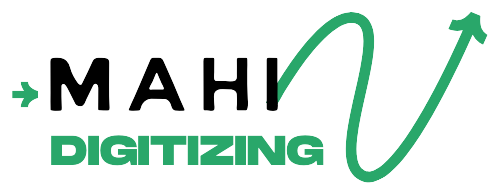Understanding Embroidery Digitizing for Patches
Embroidery digitizing for patches is the process of converting artwork into a stitch file that embroidery machines can read. This is a crucial step for achieving sharp, durable, and professional-looking patches. At Mahi Digitizing, we specialize in creating high-quality digitized files optimized for various patch types.
The process begins by carefully analyzing the design to determine stitch types, directions, and densities. This ensures that the patch will have clean edges and accurate details. Whether it’s for uniforms, promotional items, or branding, digitizing is the foundation of great embroidery.
Professional digitizing software plays a key role here, allowing the designer to translate visual elements into precise machine instructions. The better the digitizing, the better the final patch will look.
Digitizing also accounts for the unique fabric and backing used for patches. This helps avoid puckering, thread breaks, or uneven stitching during production.
Choosing the right file format, such as DST, PES, or EMB, ensures compatibility with different embroidery machines, making the production process smooth and efficient.
High-quality digitizing can enhance colors, bring out textures, and ensure long-lasting durability, making your patches stand out from the rest.
If you want your patches to reflect professional craftsmanship, the digitizing stage is where attention to detail truly matters.
Step-by-Step Process of Digitizing Patches
The first step in digitizing a patch is to prepare the artwork. This often involves cleaning up low-resolution images and adjusting elements to suit embroidery limitations. Even simple logos may require modification for optimal stitching.
Next, the digitizer sets up the embroidery path. This is where the sequence of stitching is determined, which greatly affects efficiency and quality.
Then, stitch types are assigned to each section of the design. Common types include satin stitches for borders and fill stitches for larger areas.
Once the stitches are assigned, the digitizer adjusts density and underlay settings. Underlay stitches help stabilize the fabric and keep the top stitches neat.
After the design is mapped out, it is tested on a sample patch. This step helps identify any issues before mass production begins.
Corrections are then made, such as refining edges, adjusting stitch angles, or fixing color inconsistencies.
Finally, the file is saved in the correct format and sent to the embroidery machine for production.
Best Practices for High-Quality Patch Digitizing
One of the most important best practices is to maintain consistent stitch density. Too dense, and the fabric may pucker; too loose, and the design will lack clarity.
Another key factor is ensuring that text remains legible, especially in small sizes. This may involve thickening strokes or using block-style fonts.
Always choose colors that contrast well with the patch background to make the design stand out.
Using proper underlay stitches ensures that the top stitches sit smoothly and maintain their shape over time.
For patches with intricate details, avoid excessive small elements that may not translate well in thread form.
Border stitches, such as a merrowed edge, can add a clean, finished look and increase durability.
Lastly, working with an experienced digitizing team like Mahi Digitizing ensures that your patches meet professional embroidery standards.
Different Patch Styles and Their Digitizing Needs
Embroidery digitizing varies depending on the patch style. For example, woven patches require a different approach compared to standard embroidered patches.
Chenille patches, known for their fuzzy texture, require special stitch settings and lower stitch density to achieve the desired effect.
PVC patches don’t require embroidery but can still involve digital preparation for printing or molding.
Iron-on patches may require reinforced edges to withstand heat application without fraying.
Velcro-backed patches need extra border strength to handle repeated attachment and removal.
For 3D puff patches, digitizing must account for foam placement and thicker satin stitches.
Every patch type has its unique requirements, making expert digitizing essential for best results.
Why Professional Digitizing Improves Patch Quality
Professional digitizing ensures that every stitch is precisely placed, which reduces production errors and wasted materials.
Experienced digitizers understand the limitations of thread and fabric, allowing them to optimize designs accordingly.
This results in patches that look sharp, last longer, and better represent your brand.
Professional digitizing can also reduce production time by streamlining the stitch path for maximum efficiency.
It minimizes thread breaks and reduces machine downtime, which is critical in large production runs.
For businesses, this translates into cost savings and faster delivery times.
In short, investing in quality digitizing means you get better patches and better overall value.
Common Mistakes to Avoid in Patch Digitizing
One common mistake is using low-resolution artwork as a base, which can lead to poor stitch interpretation.
Another is failing to account for fabric type, which can cause distortion in the final patch.
Using too many color changes can slow production and increase costs without improving quality.
Overcomplicating small text or intricate details can make the design unreadable in embroidery form.
Incorrect stitch density can either make the patch too stiff or too loose, compromising quality.
Neglecting to run a sample test before production is a major risk that can lead to costly errors.
Finally, not working with a skilled digitizer can lead to subpar results that hurt your brand image.
Where to Get Professional Patch Digitizing
If you need professional embroidery digitizing for patches, partnering with a reliable service provider is essential. Mahi Digitizing offers expert digitizing tailored to your patch needs.
We work with a wide range of clients, from clothing brands to promotional product companies, ensuring every patch meets high-quality standards.
Our process includes artwork preparation, optimized stitch planning, and thorough quality checks.
We deliver files in multiple formats, ensuring compatibility with your embroidery equipment.
Our experienced team ensures each patch is visually appealing, durable, and aligned with your brand identity.
With our quick turnaround times, you can get your patches produced faster without compromising on quality.
Contact us today to get started on your custom patch digitizing project and experience the difference expert digitizing can make.

